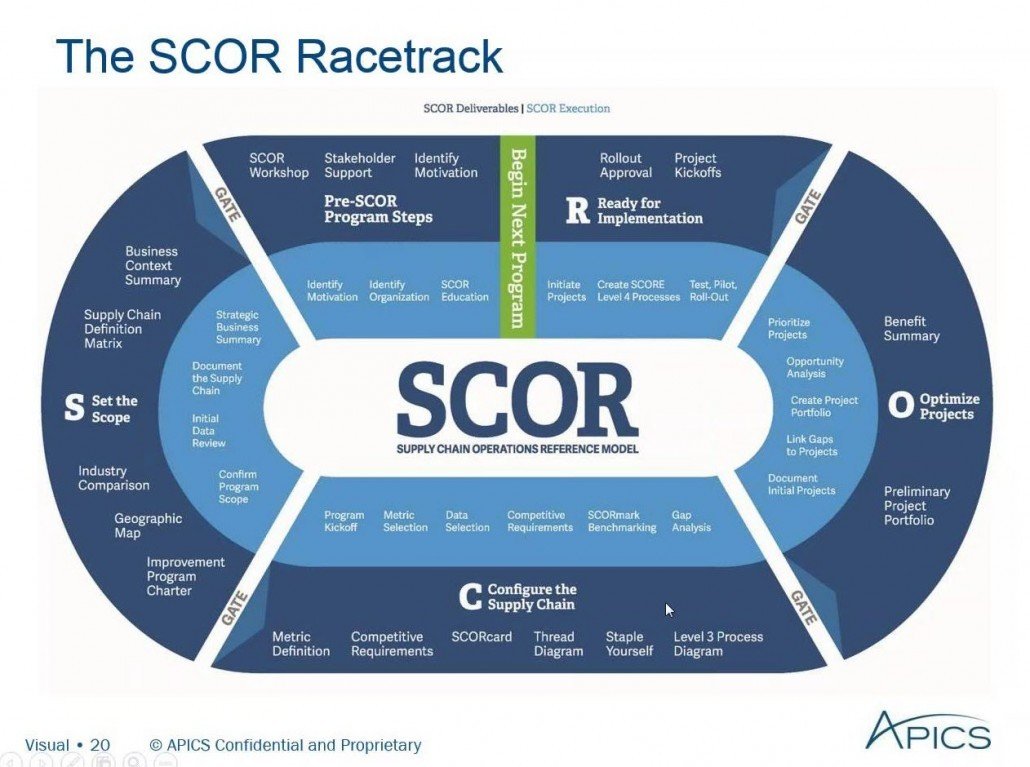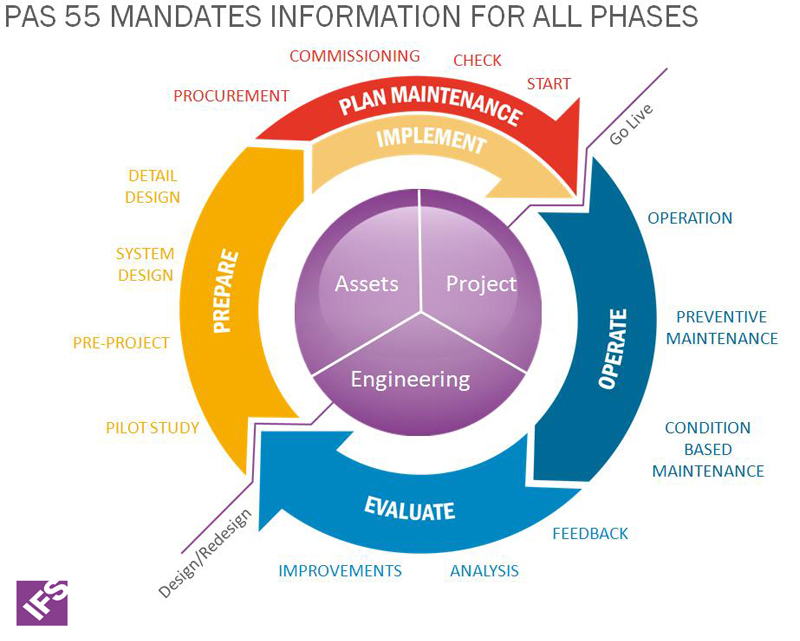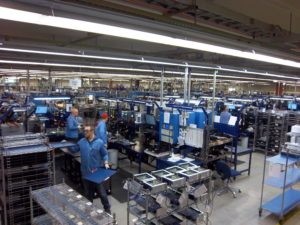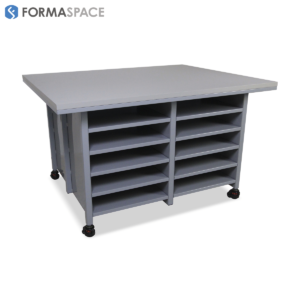In our previous article making the business case for safer workplaces, we talked about how it’s sometimes difficult to calculate the actual return on investment for improved workplace safety. In that article, we referenced a survey of CFOs that reported a majority of finance executives to believe that every dollar invested in increased safety provides at least two dollars of benefits in return.

Business Process Management Tools Identify Cost and Benefits in Capital Expenditures
However, that was just a survey of executive opinions. To extract more detailed financial numbers, it’s necessary to either conduct some very thorough case studies or to leverage some of the new generation of business planning tools that more and more industries are adopting. Some of these newer planning tools include business process management (BPM) frameworks, such as Six Sigma or SCOR from the Supply-Chain Council (PDF file, opens in new window), which are designed to help logistics teams, financial planners and other key operations managers establish standard performance metrics within their organizations.
This, in turn, helps them make better business decisions that maximize profits while mitigating business risks, like supplier delivery interruptions, manufacturing equipment issues or failure to maintain health and safety in the workplace. Quite frankly most of these BPM tools weren’t originally designed to measure the specific return on investment for improved workplace safety or the benefits of sustainable business practices. Instead, they were designed to standardize and measure best practices within an industry (or across different industries) by establishing a common language– a standard set of process descriptions, workflows, and other business process management concepts.

European PAS 55 Standard Takes Workplace Safety and Environmental Impact into Account
However, there is another business process management framework, PAS 55, which does take workplace safety and environmental impact measurement as a primary consideration. PAS 55 is less familiar to the North American business community, but (as we’ll discuss below) that may soon change in 2014. PAS 55 has been in use in the UK for many years. First published by the British Standards Institute (BSI) in 2004, PAS 55 was developed over a six-year period by an industry group of over 50 public and private entities– primarily in the utilities (electricity, gas, water), mining and public transport sectors.
What is the Goal of Asset Life Cycle Management?
PAS 55 comes at the problem of risk management and worker safety from a different direction– it’s based in the asset management side of the equation. PAS 55 addresses the underlying question of what is the optimal route between risk, cost, and performance for capital assets. This is particularly important for the type of industries that originally helped define PAS 55, such as the utility sector. Utilities are very capital intensive and they have to meet very high-performance standards, e.g., no downtime for consumer electrical service; zero contamination of public water supplies; no tolerance for injuries or deaths caused by public transport.
As an aside, the term ‘asset’ in PAS 55 has a very broad meaning: it refers to something that has potential actual value for organization. This could include patents, personnel, business goodwill and reputation, among many other things. Assets in PAS 55 are not solely limited to the way your accountant might define as asset, e.g. as a physical item has a value for a period exceeding one year.
Taken from the PAS 55 viewpoint, it’s imperative to maintain each asset for the entirety of its lifespan. This is known as the Asset Responsibility Period. It starts with the identification of need, the acquisition or creation of the asset, the utilization, and maintenance of the asset, the disposal, and renewal of the asset, and finally the residual liabilities from the asset.

PAS 55 Adopted by London Underground and New York City Transit System
Immediately you can see this approach takes into account the entire lifecycle of an asset, including its proper disposal. (Think sustainable business practices!) Overall, PAS 55 provides a sophisticated mechanism for planning. Efforts are directed toward trying to mitigate risk while getting maximum benefit from the capital expended on an asset. A quick example of this approach: PAS 55 planners familiar with maintenance costs will generally tell you that each $100 expended on planned maintenance becomes a $150 expenditure if it’s an unplanned maintenance and a $300 expenditure at the point there is an equipment breakdown.
Moral: if you miss the maintenance window, you are suddenly 300% over budget… Two well-known public transport organizations, the New York City Transit system, and the London Underground are enthusiastic early adopters of PAS 55 thanks to its management tools that not only address performance efficiency but also public safety and sustainability. As a recent example, advanced PAS 55 planning helped New York City Transit respond more quickly to infrastructure damage caused by Hurricane Sandy in 2012.
Will the PAS 55 Approach See Widespread Adoption in North America?
It’s possible North American business planning executives will soon become familiar with PAS 55 concepts, but probably not the PAS 55 name. First a little background history. As we mentioned earlier, the PAS 55 standard was first published by the British Standards Institute in 2004. Five years later, in 2009, BSI proposed PAS 55 become a new worldwide asset management standard issue by the International Organization for Standardization (ISO). The American National Standards Institute (ANSI) agreed to pursue this idea by designating an official technical advisory group (TAG) to represent the US during the development of the proposed new international standard, to be called ISO 55000.
Since the initial meetings, there have been several draft versions of the standard. The final set of proposals were hashed out at the fifth official world-wide ISO 55000 planning meeting held this past April in Calgary, Canada. The resulting proposed ISO 55000 standard has now reached what is called “Final Draft International Standard” (DIS) status. Once balloting by all the intentional country representatives is complete, it’s anticipated that ISO 55000 will be officially sanctioned and released in early 2014.
What? Another International Standard?
If the proposed introduction of ISO 55000 is news to you, your reaction may be “Oh no! Why do we need another international standard! Don’t we have enough of them already?” Indeed there may be some ‘standards’ fatigue within enterprises that have implemented multiple standards in quick succession in recent years. Rest assured, however, the proposed ISO 55000 does not supersede or replace other existing ISO standards. Rather it references the relevant existing ISO standards for established topics (such as ‘Quality’, which is covered by ISO 9000).
Will the Proposed ISO 55000 Standard Become as Important as ISO 9000?
The proposed ISO 55000 standard has a lot of benefits for operations and planning teams. Of course, we’ve identified the usefulness of this proposed standard for calculating the benefits of investing in workplace safety and sustainable business practices. If it turns out to be widely adopted, it could help standardize logistical and financial terminology and concepts– not only within individual industries but across different industry sectors. This might have the side effect of allowing career professionals to transition between different industry sectors, bringing a broader management perspective to different employers.
But whether the standard becomes widely adopted by “Made in America” manufacturers could depend upon other unexpected factors. For example, there are already signs that PAS 55-certified companies in Europe have been able to negotiate lower insurance rates. If that trend takes off in the U.S. and insurance companies began to clamor for ISO 55000 certification in exchange for offering their best insurance rates, this alone could fuel rapid adoption of ISO 55000 across many different industries here in America.
Formaspace is Here to Help
Want to know more? Get in touch with your Formaspace Design Consultant. Just fill out the short form below to get started.
As a furniture supplier to Fortune 100 and 500 companies, we have the experience to help you make your factory more efficient. We can help across the board — from creating elegant, industrial-look desks and conference tables for your public spaces and private offices, to building strong, durable, efficient industrial-grade workstations built to withstand heavy use on the factory floor or in laboratory settings, to custom-designed packing stations to make your shipping and warehousing departments more efficient than ever.









